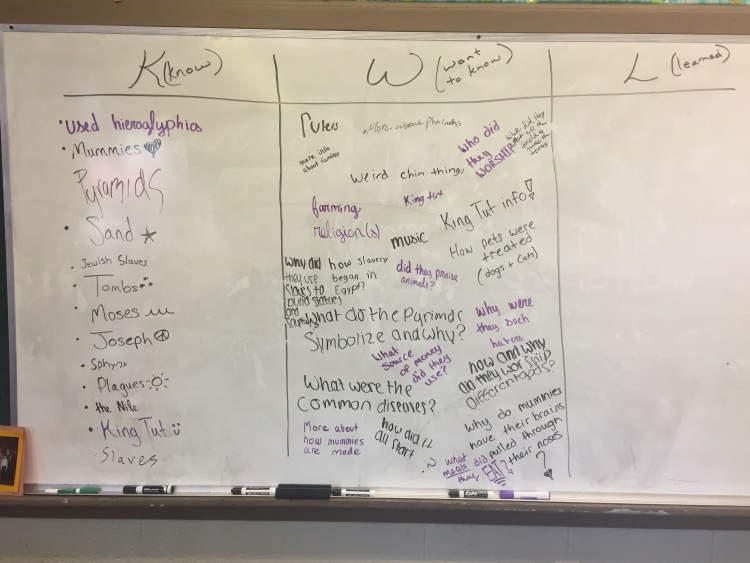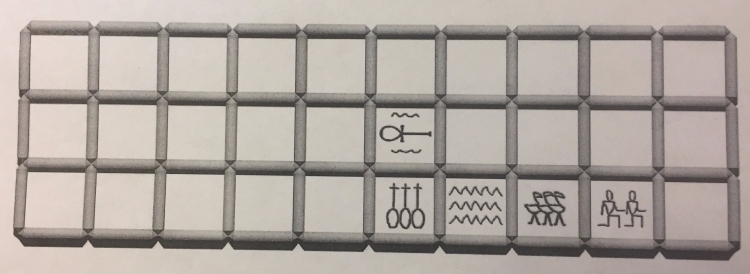Kids just love studying ancient Egypt. I never have a hard time getting them fired up about studying pyramids and mummies, as you can see from the KWL chart my 8th graders started below:

(As a side note, I always photograph group brainstorms like this so that we can return to them later. When we finish this chapter, I’ll project this back on the board and we’ll fill in the L column with all the marvelous things we’ve learned. #teachertips)
We can only talk about dead people so much, so for a hands on activity, we learn how to play the Egyptian board game senet. I know how you love board games, so here’s a fun one to add to your repertoire.
I have been teaching students this game for years using materials that are already laying around my classroom. I use Popsicle sticks for throwing sticks, colored counters for pawns, and print out a simple board. You can browse several options and choose your favorite. The one I use looks like this:

Actually playing the game opens up a great conversation about historical guesswork. When they discover a board game in an ancient tomb, it is rarely accompanied by the Parker Brothers instruction manual, so historians piece together clues to make conjectures about how the game was played. This is, in fact, the whole work of the historian. As we study history, we must always be mindful that what we know is a patchwork of conclusions — drawn from evidence, certainly, but riddled with biases and guesswork as well.
Here is my favorite possible way to play senet.

